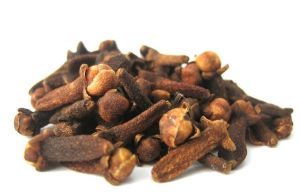
Lucy Morales – Candida Albicans is a type of yeast that can occur in the human gut. According to research, 70% of people have candida colonies in their intestines, mouth or skin, however the candida in your gut is typically kept in balance by healthy gut bacteria. The problem is that candida can over run your system if our bacterial balance is upset by factors like antibiotics, poor diet, alcohol consumption, prescription drugs, diabetes or pregnancy.
As the candida infections spreads, the overgrowth releases nasty toxic byproducts into your body causing numerous unpleasant symptoms. Candida frequently causes superficial infections but may also cause systemic infections. Candida Albicans can also cause issues like chronic fatigue and serious digestive issues, which can negatively — and dramatically — affect your quality of life.
Candida infection isn’t pleasant, but it is manageable. Try incorporating some of these foods into your diet. Here are 10 foods proven to be effective in fighting the problem.
10 Candida Fighting Foods
1. Cloves
The great thing about cloves is the presence of certain phytonutrients, as well as an extremely powerful anti-fungal agent called Eugenol. This is something that you should take for any kind of yeast infection because it has a proven track record of killing these types of fungi. Cloves are also packed to the brim with antioxidants.
Clove tea is a very popular way to enjoy clove, and you can experiment with it too, if you’re not a fan of the strong tasting cloves themselves.
2. Butter
Not just any butter; to get the full benefit of this particular food in the fight against Candida, the butter will have to be raw. Raw butter is high in butyric acid, which is a source of energy for your intestines and helps reduce inflammation.
You should also make sure that it comes from cows that have naturally grazed. The reason for this is that only grass-fed animals produce lauric acid, a powerful antifungal in its own right. And as always, make sure you source your butter humanely.
3. Oregano
Oregano has many unsung health benefits. It contains powerful antioxidant and antifungal substances, including two primary antimicrobial agents effective in the fight against candida — known as thymol and carvacrol.
Taken as a herb, you can add oregano to pretty much any meal. You can also get the benefits of oregano in a daily supplement called oreganol.
4. Cinnamon
Cinnamon has long been known to be a very effective treatment for people with diabetes because it can help stabilize your blood sugar. And, while it does not necessarily remove candida from your body, it is recommended here as a dietary way of helping you deal with one of the main symptoms of candida infection — it causes your blood sugar levels to go haywire.
5. Broccoli and Brussel Sprouts
These two vegetables (the names of which strike fear into the hearts of children) belong to a family called cruciferous vegetables, along with other greens like cabbage and watercress.
In addition to their antifungal properties, these vegetables are also a great source of fiber and a great source of prebiotics. Prebiotics have a lot of health benefits and lacking them in your diet can lead to things like inflammation and indigestion and consequently, candida albicans too. So if you’re dealing with Candida, try and incorporate these foods a couple of times a week.
6. Pumpkin Seeds
Once again, pumpkin seeds are an extra supplement that help to combat fungus. They are known to have antifungal and antiparasitic properties.
They are also a great source of Omega-3 which is something that a lot of people are lacking in their diet despite its importance. Omega-3 is known for being very effective in keeping your heart healthy, which it does by producing fatty acids which combat inflammation. These same acids combat inflammation in your gut too, inhibiting the development of Candida.
7. Cayenne Pepper
Cayenne Pepper is another food that kills fungus without causing you any harm — but it does it in a very efficient way. Cayenne includes a compound known as CAY-1, which targets fungal membranes and latches itself onto them, penetrating the cells of the fungus and causing it to leak and then die. Candida won’t know what hit it.
8. Coconut Oil
Coconut oil is a potent Candida killer, and one of the most useful antifungals there is. It contains Lauric acid and Caprylic acid, which both help prevent Candida overgrowth and strengthen your immune system.
Coconut oil is very heat stable, so it’s an ideal oil to use for frying and cooking. It is also inexpensive to buy and has a much longer shelf life than other oils. Look for a high quality, organic, virgin coconut oil.
9. Water
The most obvious thing that people say about dealing with illnesses and problems is usually the right one: You’ve got to stay hydrated. And hydrated by pure water too. Get the absolute best stuff that doesn’t have any chemicals in it (or as few as possible).
Filtering it yourself is the best way to do it and filters are very easy to find. Keeping your system flushed with good hydration will keep fungi like Candida at bay.
10. Teas
While there are many antifungal foods, antifungal teas are a great addition to an anti-Candida diet because they offer taste, variety and hydration. Teas such as green tea, oolong tea and clove tea contain a helpful element known as tannis, a powerful antifungal substance.
References
greenmedinfo.com/disease/candidiasis
thecandidadiet.com/candida-fighting-foods
SF Source Wake Up World Oct 2018
